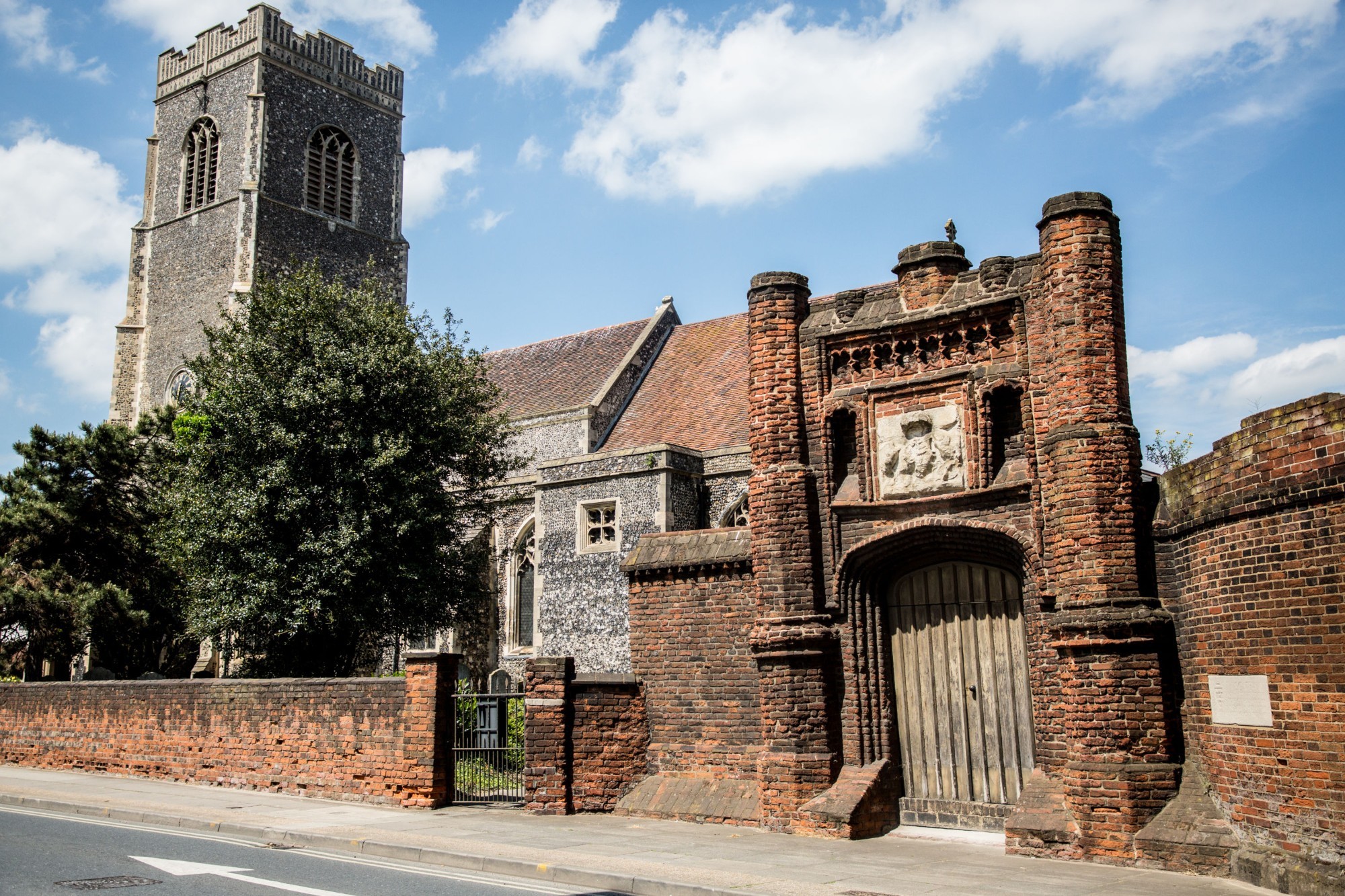10 Oldest Buildings in Ipswich
POSTED ON: 16/06/2022
Written by Samuel Newbould, Year 10 Northgate High School Student
Ipswich is England's oldest Anglo-Saxon town, and one of the oldest settlements in the UK, and as a result, has a diverse and rich heritage. From the first Anglo-Saxon settlers and a Viking invasion, to Medieval traders and the industrial revolution, Ipswich has seen it all.
With 1,500yrs of people and stories calling the town home, Ipswich has a wide variety of architecture throughout the historic streets; including some fascinating buildings, which we will explore in this blog. So strap in and enjoy the ride through time...
Pykenham's Gatehouse, 1471

This beautiful timber-framed house was constructed in 1471 by William Pykenham (Archdeacon of Suffolk) making it one of the oldest buildings to still exist in Ipswich.
Prior to the construction of the house, Pykenham was renting a neighbouring house but decided his status required a more impressive home. He created the gatehouse to house a permanent gatekeeper. Since then, the gatehouse has come under the possession of Ipswich Building Preservation Trust and is open for the annual Heritage Open Day event.
Unitarian Meeting House, 1699

This building was built in 1699 by Grinling Gibbon (designed probably by Sir Christopher Wren) and not much has changed about it since then. The interior consists of a stunning gallery and an intricately carved ornate pupil which was carved by Gibbon or one of his students.
Over the years, 22 ministers have served there and the building has become a Grade I listed place of worship.
Christchurch Mansion, 1549

In 1549, Robert Withipoll built Christchurch Mansion on the site of an Augustinian Priory. Unfortunately, in the 17th Century the mansion was seriously damaged by a fire and rebuilt as a Jacobean Stately home in red brick.
The mansion is now a popular museum and holds lots of fine art and several pieces of furniture on display in the various rooms. One of the galleries is named after Cardinal Thomas Wolsey. The mansion contains the largest collection of paintings by John Constable outside of London.
Ancient House, 1400s

The house was built in the 14th Century and has an extravagant exterior of pargetting, ornate plasterwork and intricate wood carvings depicting animals, fruits and scenes inspired by Trader's stories of Asia, Africa, America and Europe.
In 1603, the Sparrowe family moved in giving it a new name, Sparrowe's House. By 1979 the house was in a critical state with a high level of collapse. In 1984 restoration began on the whole house and no part was left untouched.
St Peter's by the Waterfront, 1297

St Peter's Church was built on the location of the earliest church in Ipswich in which, on 8th January 1297, Edward I had his daughter Elizabeth of Rhuddlan marry John I, Count of Holland. After that church fell into ruins, St Peter's Church (the one we know today) was built on the same site in 1460. In the church, there is a medieval stone coffin and Knapp brass, a memorial brass to John Knapp and his wife Martha.
Wolsey's Gate, 1548

What remains of an ambitious plan to build a collage in 1548 by Cardinal Thomas Wolsey. The college was being built to rival Oxford College and would most likely have come close if Wolsey hadn't fallen out of favour with King Henry VIII. During the reformation, the beginnings of the college were torn down and the materials used were transported to London to be used for building the Palace of Whitehall.
Town Hall, 1878

The Town Hall Hal is one of the most impressive Victorian buildings in Ipswich. It was built in 1878 next to the Corn Market which now both house a pair of art galleries, a theatre, a bar and a coffee shop. The hall has the figure heads of King Richard I, Cardinal Thomas Wolsey and King John decorating the front wall. Above the figure heads are four statues representing Commerce, Agriculture, Law & Order and Justice.
St Margaret's Church, 1307

St Margaret's Church has records dating back to 1307 but the oldest part of the church dates back to the late 13th century. This makes it one of the oldest churches in Ipswich. The church organ was originally constructed in 1859 and used in the Holy Trinity Church, Bedford but after it went redundant, St Margaret's Church bought the organ in 1981 and had it fitted.
St Mary at the Elms Church, 1100s

This church is situated in the heart of Ipswich and parts of it date back to the 11th century. It's doorway and nave are both Norman and date back to the 15th century and its tower is from the 16th century. In 1883, however, multiple repairs were needed on the church and much of it was rebuilt.
St Lawrence Church, 1500s

The church was built in the 15th century and 4 of its bells were cast in 1450 and the 5th one was later added in 1480. They are still intact and have been recognised as the oldest ring of church bells remaining in the world. St Lawrence Church served as a Parish until the late 1970s when it was declared redundant by diocese. It was later reopened in July 2008 as a community restaurant and gallery.
POPULAR POSTS
The Giraffe House's Flapjacks
A simple yet delicious flapjack recipe from Cathy at The Giraffe House, using classic cupboard
READ MOREThe Best Food Delivery & Takeaway in Ipswich
Enjoy your favourite Ipswich restaurants from the comfort of home! More and more
READ MOREFree Things To Do in Ipswich
A great day out doesn't need to break the bank; some of Ipswich's top attractions and best
READ MORE